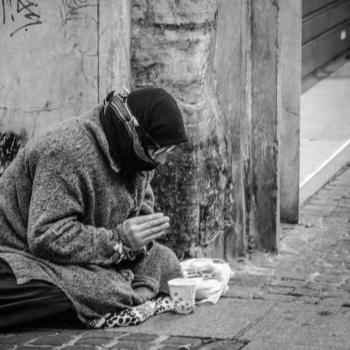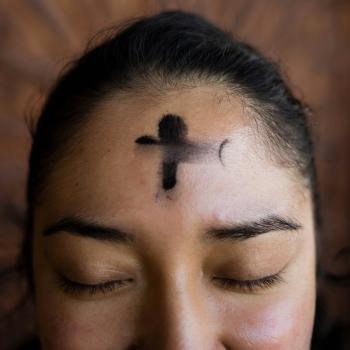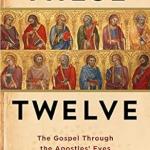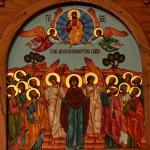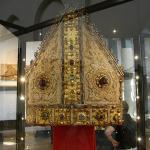 The fifth and final Sunday during the Great Fast is dedicated to the remarkable St Mary of Egypt. For our modern, licentious society, there could be no better saint for the Church to point to than St Mary of Egypt. As Christians who live in an over-sexed culture, it is not surprising so many succumb to the temptations which completely surround them and sin. This feast day is especially important for them because it shows that there is hope. No matter what one might have done in the past, God’s love is still there for them. Even if one has become so addicted to sex that they find it nearly impossible to persevere against lust, St Mary of Egypt shows them that not only is it possible, one can turn one’s life around and become a great saint. There is no end in God’s mercy and willingness to work with us, to take us where we are, and to raise us up to the people he desires out of us. All of us were made in the image of God; while sin might dirty up that image, the grace of Christ is able to cleanse us of all sin, and bring that image back out in the open, as radiant and beautiful as God intended it to be.
The fifth and final Sunday during the Great Fast is dedicated to the remarkable St Mary of Egypt. For our modern, licentious society, there could be no better saint for the Church to point to than St Mary of Egypt. As Christians who live in an over-sexed culture, it is not surprising so many succumb to the temptations which completely surround them and sin. This feast day is especially important for them because it shows that there is hope. No matter what one might have done in the past, God’s love is still there for them. Even if one has become so addicted to sex that they find it nearly impossible to persevere against lust, St Mary of Egypt shows them that not only is it possible, one can turn one’s life around and become a great saint. There is no end in God’s mercy and willingness to work with us, to take us where we are, and to raise us up to the people he desires out of us. All of us were made in the image of God; while sin might dirty up that image, the grace of Christ is able to cleanse us of all sin, and bring that image back out in the open, as radiant and beautiful as God intended it to be.
The image of God was truly preserved in you, mother, for you took up the cross and followed Christ. By so doing, you taught us to disregard the flesh, for it passes away, but to care instead for the soul, since it is immortal. Therefore your spirit, holy mother Mary, rejoices with the angels! (Troparion of the Sunday of Mary of Egypt).
Like many early saints, we only have a rough estimate as to when St Mary of Egypt was lived; she was born circa 344 and died around 421. Around the age of twelve, she ran away from home, and made her way to Alexandria, where she lived as a beggar, selling flax, but also, where she lived a life where she was able to fulfill her sexual desires. And what desires did she have! She enjoyed sex, indeed, one could say, she was addicted to it. She wanted it, and, even if people offered to pay her for it, she would turn away the payment, because she enjoyed it so much. And she didn’t just like sex, she really went all out into its mysteries, doing anything she could think of doing, with as many men as she could find to do it with. For seventeen years she lived in Alexandria, begging for food and sex, as poor as she was sinful, as satisfied with her life of pleasure as she was poor. We must not have the illusion that a life of sin will automatically appear to be harmful. Indeed, so many, like Mary, do not see the consequences of their actions while they sin, that they slowly come to believe it can’t be a sin. Thus, as St. Augustine says, we are attracted to sin by some lesser good, not seeing the greater good which we should embrace.
We do not have much more information about Mary’s early life than this; this leaves us with many questions. Perhaps the most pertinent is this: did she ever become pregnant? Did she ever have children of her own, and if she did, what became of them? Clearly, she was concerned about herself, and herself alone, and all she wanted out of life was pleasure, pleasure without responsibility. If she had any children, hopefully she gave them up as soon as they were born, because she wouldn’t have been able to take care of them; indeed, she really couldn’t properly take care of herself. While we do not know, it is hard to believe someone so sexually active did not have children, unless, of course, they were incapable of having children.
It is easy to see how, at this stage, St Mary of Egypt took on the kind of life that our modern, hyper-erotic culture suggests as acceptable to our youth. And, as has been already said, for as long as it lasted, she did find some satisfaction in it. That, of course, is its attraction. “How can something which feels so good be wrong?” “I should be free to do with my body whatever I want.” “The reason you say I shouldn’t do this is because you can’t; you envy me.” Are these not the words we hear from those who live a life of similar depravity? And, like St Mary of Egypt, those who fall for such cliches do not understand what it is they are doing. While they might find pleasure, such pleasure is temporary, and, one day will be as nought. And what will they do when those who once treated them with kindness later treat them with contempt? They might think they are using others for their pleasure, but they are the ones being used, and eventually, discarded. Then what will become of them? Without proper guidance, the end result is pitiful at best. While sexually active, they hurt their own personal dignity by doing what they have done. But it is only after no one would care to be with them, tempus fugit, that the reality of their actions will be realized. What will they do then?
St Mary of Egypt shows us that those who have been seduced by our sensous society do not have to end their lives in despair, although, in our society, what else is there, if the message of grace is not given to them? Once one has given oneself over to debauchery, they end up feeling as if there is nothing else they can do, and so they keep giving over to sin, even if they really don’t like it. They feel there is nothing else to lose, since they have lost everything already. And it is what the world now expects of them, so why shouldn’t they just satisfy such expecations? If they do, people give a semblance of acceptance. And that is more than what they fear will happen if they stop, for then they will get nothing; better the illusion they know than the harsh reality they can’t bear.
One might realize the harsh reality, and still do everything to perpetuate the illusion, which for those addicted to sex means getting deeper and deeper into debauchery. To be sure, what happens next in the life of St Mary of Egypt demonstrates this quite well. She sees a group of people going to the sea, and she wonders what is happening. She finds out they are going on pilgrimage, making their way to Jerusalem, to visit the city for the Exaltation of the Holy Cross. They will be going there by way of the sea, and will get there a few days before the celebration. She decides she wants to journey with them, not because she wants to go on pilgrimage, but because she wants a new experience, and believes that the younger pilgrims would be fair game for her sexual exploits. She has no money, no food, but makes it known that she offers herself to anyone who wants her for those willing to help pay her way. And, what happens, but she gets a group of ten youth who help her aboard; from her description of the voyage, it is clear that she was as sexually active as ever, if not more than usual.
Now, it does not take extraordinary insight to see the irony here. Those aboard the ship are going on a pilgrimage, and yet, while on the ship itself, willingly take from Mary what she offered to them. Who is taking advantage of whom here? Shouldn’t the pilgrims be working for her reform? Were there any priests involved? We do not know. But it is a common occurrence; those who show the semblance of piety on the outside do so to hide the perversity contained within. Mary just gave the pilgrims the opportunity to play out their fantasies while feigning holiness.[1] She was never more than what she claimed to be, while her fellow travellers only had each other as witnesses, and who among them would be the first to speak? Eventually it will be Mary herself, without any accusation, without any condemnation, without even naming names: at one time her simplicity was naivity, later it was to become wisdom.
When in Jerusalem, she had a few days before the feast, and so took the time to enjoy herself as much as possible with the men of the city. If it were possible, her own sexual appetite had increased. As is so often the case with sin, the more one embraces it, the less an individual act is able to satisfy one’s desires, and the more depraved one must become to get any pleasure out of one’s actions. And so, before the feast, she went through the streets of the city and did as much as she could in so little time, finding many of the city’s citizens more than willing to be with her. On the day of the Exaltation of the Holy Cross, the city was jam packed with people celebrating, making their way to church, to see a relic of the true cross. She joined in with the crowd, but, whenever she found herself at the entrance of the church, she could move no further; a force kept her back. She tried three or four times, each time finding her way blocked. She simply could not get inside.
Surprised, tired, and quite saddened, Mary moved over to the side to sit down and rest, sitting under an image of the Theotokos. It was there, stirred by her inability to get in to the church itself, she contemplated what had happened, and everything came rushing to her; she understood that she was being prevented from entering because of her way of life, and it was a grace given to her to make her stop and reflect upon what she had done. She realized the full consequences of her sins, and began to cry. She saw how wretched her life had been up to that point. She saw what it had done to her. She understood that what she had done affected more than herself, but all those men who she had preyed upon, and that it would be tough for them, as it was for her, to come out of the mire they had all willingly entered. She looked up to see the image of the Mother of God, and prayed to the Theotokos, saying that Christ came to the world to save sinners, of which she knew she was. She said that if she would be allowed in to see the cross, the cross on which Christ had died for the forgiveness of sins, she would take on a life of repentance, fleeing from all fornication from that point on, and living whatever kind of life God would have for her. She felt inside as if her prayer had been heard, got up, and walked into the church, this time without anything stopping her. Inside, when she saw the cross, she knelt down in front of it, kissed it, and gave thanks to God for his bountiful mercy to her.
Upon leaving the church, she returned to the icon of the Theotokos, and thanked the Mother of God for her intercession, and asked her now to show her the kind of life the God would have for her. Upon finishing her prayer, she heard the words, “If you cross the Jodarn, you will find rest.” Agreeing to what it was she heard, she got up and prepared to make her way, only to be stopped by a stranger, who gave her three coins, which she was told she was to use. She went and bought three loaves of bread with the money. Then she made her way to the Jordan and reached the Church of St John the Baptist, at the banks of the river, right before sunset. She prayed in the temple, washed herself in the Jordan, drank from the Jordan water, had communion, and then ate one of her loaves before taking a small boat across the Jordan itself. Thereupon she prayed to the Theotokos, asking for more direction, which she got – she was led to the desert, where she was to live alone, away from all humanity, for forty-seven years, living on whatever food she could forage in the desert itself. During that time, she was able to receive inspiration and guidance from God, who taught her what she needed to know; she was able to overcome her temptations (taking her seventeen years of spiritual battle to do so), and she was to have worn out her clothing, becoming entirely naked, in the process. She hid whenever she found someone coming, to stay out of their way, and to be left unknown to the world.
And that is what she would have been, unkown, if that was the end of the story. Mary could have taken off into the desert, and become one of the countless saints whose lives are left unrecorded. But God had other plans. Her story is one meant for us all, to show that anyone can be changed, and made holy. All it takes to start that journey is a change of heart. Great sinners, once converted, often became great saints; what allows them to be one, when touched by God, can be used to become the other.[2] A heart once on fire for sin becomes a heart on fire for God. Having seen where sin leads, having experienced its destructive ability in their lives, while still tempted by it, they will not be fooled by its promises. And yet they will also be mercifully humble; knowing how far they had fallen because of sin, they know they have no reason to judge anyone else.[3] “For if the sprinkling of defiled persons with the blood of goats and bulls and with the ashes of a heifer sanctifies for the purification of the flesh, how much more shall the blood of Christ, who through the eternal Spirit offered himself without blemish to God, purify your conscience from dead works to serve the living God” (Heb 9:13 – 14).Great sinners, once converted to Christ, find that their dead works, their sins of the past, no longer have any claim over them. Strengthened by their love, they can partake of the Spirit and live the rest of their lives devoted to Christ, finding a joy they had not known before.
St Zosimas, a hieromonk (priest-monk), was an elderly man who had been living the life of a monk since his youth. He was very zelous in his practice, perhaps a bit too zealous, because he thought he had achieved all that was possible, and there was no one left who could teach him something new. Such pride was, to be sure, based upon actual accomplishments, but nonetheless, such pride was a great fault, and one which required a lesson like no other for it to be overcome.[4] It was because he was truly looking for perfection, and he had a heart willing to be led by God, that God in his wisdom sent an angel to him and told him it was time for him to move to a new monastery, one right on the edge of the Jordan river; there, Zosimas was told, he would learn of ascetic ways beyond his imagination, beyond all that he has attained, to show how much greater others can be than him.
Despite his age, he was accepted by the monastery, which was strict in its observance. The angel sent him there for the sake of its Lenten rule: during the forty days of the Great Fast, the monks would leave the monastery, and enter deep into the desert, away from anyone else, to be alone with God until the time they were to return to the monastery on Palm Sunday, so they could celebrate the Passion and Ressurrection of Christ together. When Zosimas had went deep into the desert, walking for twenty days, he climbed a hill and saw in the distance an unexpected sight: he saw someone was out there, by themselves, and as soon as Zosimas had seen them, they had taken off and started to flee. Zosimas wasn’t sure what it was he saw; the form was humanoid, but also, from what he could tell, naked; its skin was darkned by the sun, the hair long and white. Was it a phantom, an illusion, a spirit, a devil, or was it as it appeared to be, a human? Uncertain, Zosimas took off in pursuit, making the sign of the cross as he did. He yelled out, asking why the person was running away in fear. In response he heard the voice of a woman respond, calling him by name, saying if he would like to fulfill the wish of an old, sinful woman, to give her his cloak, so she could talk to him. He took off his shirt and threw it down upon the ground and turned away, so that she could take the garment without his watching. When she had done so, she let him know by asking why he had followed her, what he thought he could learn from her that he had not already learned on his own. Zosimas’ response was only to fall at her feet, humbled by the sight of an old woman, whose holiness radiated from her; as he fell at her feet, she bowed to him, and at once, both asked each other to be blessed by the other. Mary chided Zosimas and said that he was a priest, and it was his duty, not hers, to give the blessing. Once again surprised, not knowing how she knew his priestly orders, he begged her to bless him again, seeing how filled she was with grace, and at that time, she did as asked, only to ask him again to pray for her as a priest, and to bless her with his office, which he did. Finally he was able to ask her to tell him her story, to find out who she was, and how she had become so holy. She was at first too ashamed to tell him, but from his insistance, she did, and he learned not only of her past, but of the great ascetical practices she was to take while living in the desert.
He was humbled by what she had accomplished, far exceeding his, especially after the kind of life she had once lived. But she was still humble about it, unlike he had been when he thought he had attained the height of perfection. For this reason, she continued to progress and become saved.[5] She saw herself as a sinner needing God’s grace, and she knew that God had sent Zosimas there to help her with one last request. She told him he was to return to the monastery and stay there, despite whatever other desires he might have. He was to tell no one about meeting her, at least until she died, so she could be left in the desert by herself. Then, when Lent came around again the next year, he was not to go out into the desert as was customary, but to stay put. She said God would make sure he did, so that even if he wanted to leave, he would not be able to. He was asked to set aside some communion for her on the evening the monastery celebrated the Last Supper, and then afterwards, to go out and meet her on the banks of the Jordan, to give to her the eucharist, which she had been without since the night she first went into the desert.
The year passed by, and when Lent started, Zosimas got sick, and was forced to stay in the monastery. Remembering that he had been told he wouldn’t be able to leave, he marvelled at Mary’s presience, and waited til the appointed time, on which he was able to go and meet her. And there he waited for sometime, holding a chalice with the communion in his hands, wondering how she would get there; he didn’t even see a free boat which she could use to meet with him. But then he saw her figure across the water, and saw her bend down, make a sign of the cross on the water, and then walk across to meet him. In awe, he was about to fall down and bow before her, only to be reprimanded by her, telling him that he is a priest, holding the Lord in his hands, and he should think before he acted. Once again amazed at her wisdom, he gave her communion. She then told him she said she had one last request for him: to return to where he first met her, during the next Lentent season. Until then, he was to return to the monastery and to pray for her and her salvation. After giving the customary kiss of peace, she departed as she came, walking across the Jordan River.
Zosimas, did as he was told, and came upon where he had first met St Mary, and found her there, dead, her body incorrupt, with a message written in the sand next to her, saying she had died that night she had received communion, and asked for him to give her a Christian burial. Once again, amazed, he tried to do as he was told; he found an old piece of wood, which he tried to use, but found it he was incapable of digging the grave. At that time a lion came around, and it showed kindness and affection to the priest. To Zosimas’ surprise, it started to dig for him. Amazed, St Mary was able to be buried, and given a proper Christian burial. Then the lion departed, and Zosimas returned to the monastery, whereupon he was free to tell his tale.
Having been a sinful woman, you became through repentance a Bride of Christ. Having attained angelic life, you defeated demons with the weapon of the cross. Therefore, most glorious Mary, you are a Bride of the Kingdom! (Kontakion of the Sunday of Mary of Egypt).
By bringing forward St Mary of Egypt for the last Sunday during Lent, the Church reminds us not to be like St Zosimas, overly proud of what we have done, to think there is nothing more for us to learn. There is always more. There is always more we can do. To do what we should be doing, however, we must always be open, through humility, to the prompting of God in our life. Pride makes us want to rest in what we have already done, to be satisfied and think it is enough. Humility, true humility, knows otherwise. One can begin right, and get side-tracked because of pride, as St Zosimas did. One can begin in sin, and still end with a share of Christ’s glory, as St Mary of Egypt did. No one, no matter what they have done in the past, is left without hope. All it takes is a new start in life, and a willingness to follow whereever God should lead. Make no mistake, God desires to make something great out of all of us. But to be great, we must first be made low, we must first be humbled. Only the one who has become the servant of all can become great. “And Jesus called them to him and said to them, ‘You know that those who are supposed to rule over the Gentiles lord it over them, and their great men exercise authority over them. But it shall not be so among you; but whoever would be great among you must be your servant, and whoever would be first among you must be slave of all. For the Son of man also came not to be served but to serve, and to give his life as a ransom for many’” (Mk 10:42 – 45). St Zosimas was to learn the truth of this by St Mary of Egypt; he lived the rest of his life in humility, helping to reform the monastery he lived in, and was, like Mary, able to share in Christ’s glory upon his death.
Footnotes
[1] It is so easy to put on a pretense of holiness for the sake of praise; it is much more difficult to be holy. Those who act for praise can find ways to get it; those who act for the sake of holiness tend to find hostility. “There are some who pretend to be virtuous and appear in sheep’s clothing as something else; but in the inner man they are totally different, perhaps brimming over with every kind of unrighteousness or filled up with jealousy, intrigue and stinking pleasures. The masses honor such people as saints who have transcended the passions, but since the eye of their soul is not clear they cannot recognize such men by their fruits. And yet, when men keep their heart in piety, virtue, and simplicity, and really are saintly, then they misjudge them as being like the rest of men, and they are scorned and passed over,” St. Symeon the New Theologian, “The Practical and Theological Chapters,” pgs. 33 – 103 in The Practical and Theological Chapters & The Three Theological Discourses. trans. Paul McGuckin (Kalamazoo, MI: Cistercian Publications, 1982), III.26.
[2] Since we all desire happiness, of which God is the ultimate source, we all desire God. We might misunderstand how to get that happiness, and confuse momentary pleasure for it. Yet, when the sinner finds their desire is misplaced, their strong desire is able to be refocused and placed back on God. That which made them great in sin then allows them to be great in virtue.
[3] One of the most beautiful examples of this comes from the sayings of St Moses the Black. “A brother at Scetis committed a fault. A council was called to which Abba Moses was invited, but he refused to go to it. Then the priest sent someone to say to him, ‘Come, for everyone is waiting for you.’ So he got up and went. He took a leaking jug, filled it with water and carried it with him. The others came out to meet him and said to him, ‘What is this, Father?’ The old man said to them, ‘My sins run out behind me, and I do not see them, and today I am coming to judge the errors of another.’ When they heard that they said no more to the brother but forgave him,” The Sayings of the Desert Fathers. Trans. Benedicta Ward (Kalamazoo, MI: Cistercian Publications, 1984), 138 – 9. Moses, who had once been a slave, and later a bandit, eventually found his way to the Christian faith, became a monk, and died a martyr.
[4] Pride, when left unchecked, can easily destroy the soul of one who is otherwise very holy. It leads them to believe more about themselves than they should, to believe that they have overcome when they have not; having climbed to such a great height, the fall is even worse than any other. “Our eighth struggle is against the demon of pride, a most sinister demon, fiercer than all that have been discussed up till now. He attacks the perfect above all and seeks to destroy those who have mounted almost to the heights of holiness. Just as a deadly plague destroys not just one member of the body, but the whole of it, so pride corrupts the soul, not just part of it,” St John Cassian, “On the Eight Vices,” pgs. 72 – 93 in The Philokalia: The Complete Text. Volume One. Trans. G.E.H. Palmer, Philip Sherrard, and Kallistos Ware (London: Faber and Faber, 1983), 92.
[5] While pride will destroy an otherwise great saint, “Humility often saves a sinner who has committed many grievous transgressions,” St Basil, “Of Humility,” pgs. 475 – 486 in St. Basil: Ascetical Works. trans. Sister M. Monica Wagner (New York: Fathers of the Church, Inc., 1950), 482.




